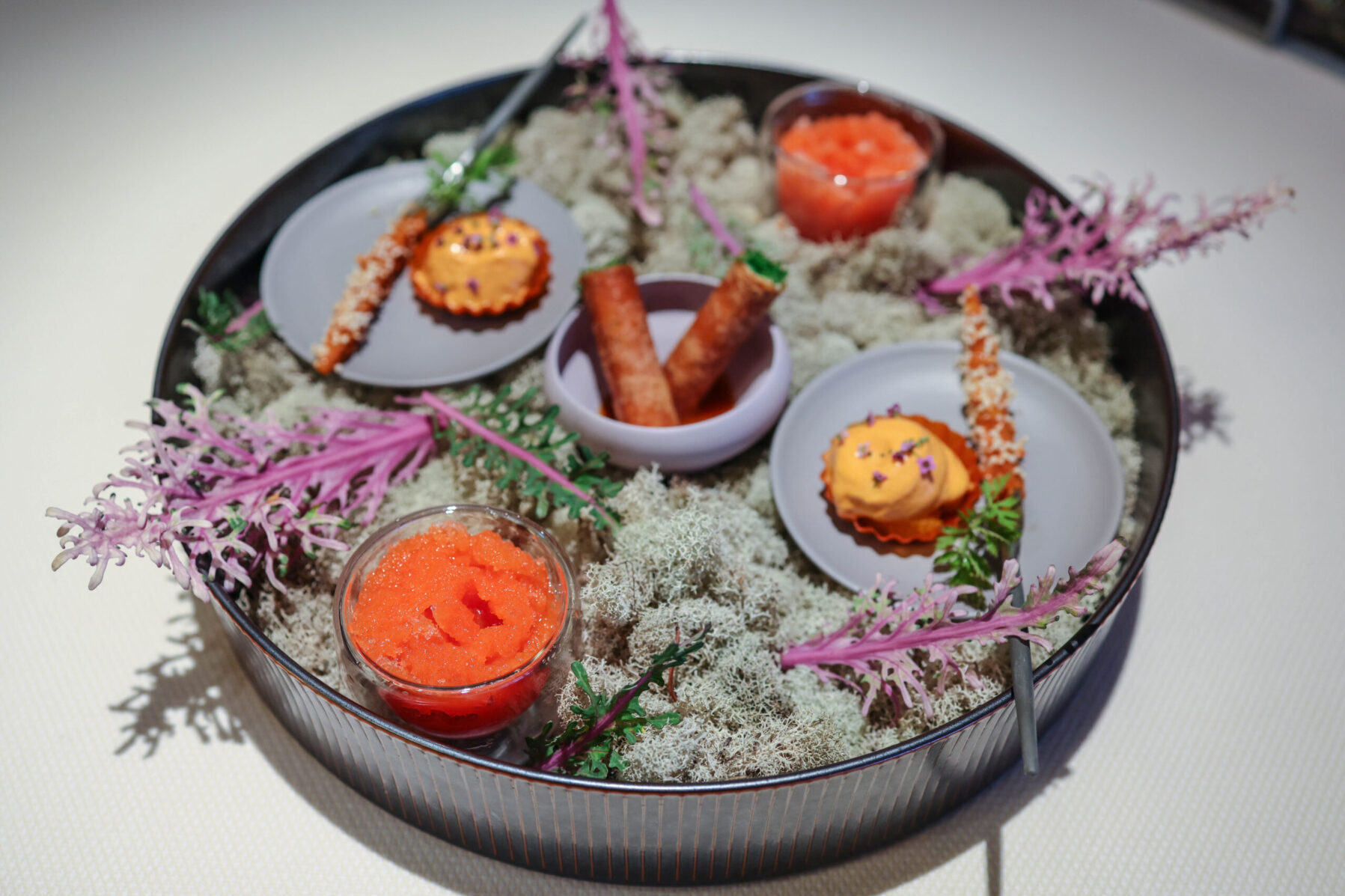
Killen’s meaty glory
In my latest article for The Bold Italic, published August 12, 2020 (all Bold Italic articles here): On hunting for real barbecue in the Bay Area, a passion and struggle for someone who has done multiple BBQ research road trips across the U.S. over the past 15 years.
https://thebolditalic.com/hunting-for-the-best-barbecue-in-the-bay-area-765d71a18bb8
My BBQ Research & Struggle to Find “the Real” Outside the South:
True barbecue is as elemental as music. Like growing up on classic soul or country, barbecue is as regional as Sam Cooke to Solomon Burke, Waylon Jennings to Loretta Lynn. Each style is valid, each contribution crucial, but none are alike.
Growing up mostly bi-coastal between suburbs of LA and NYC, you could say it’s my birth in Oklahoma and following years in Kansas City, Missouri, that arose in me a taste for BBQ. I’m a city-centric, globally-minded, jazz and poetry-adoring type who craves Champagne and caviar. But my Sicilian-cowboy, Oklahoma-City-meets-Kansas-City roots are a touchstone: when I eat fatty, char-rich barbecue or catch a strain of George Jones’ plaintive voice, I want to shed a tear.
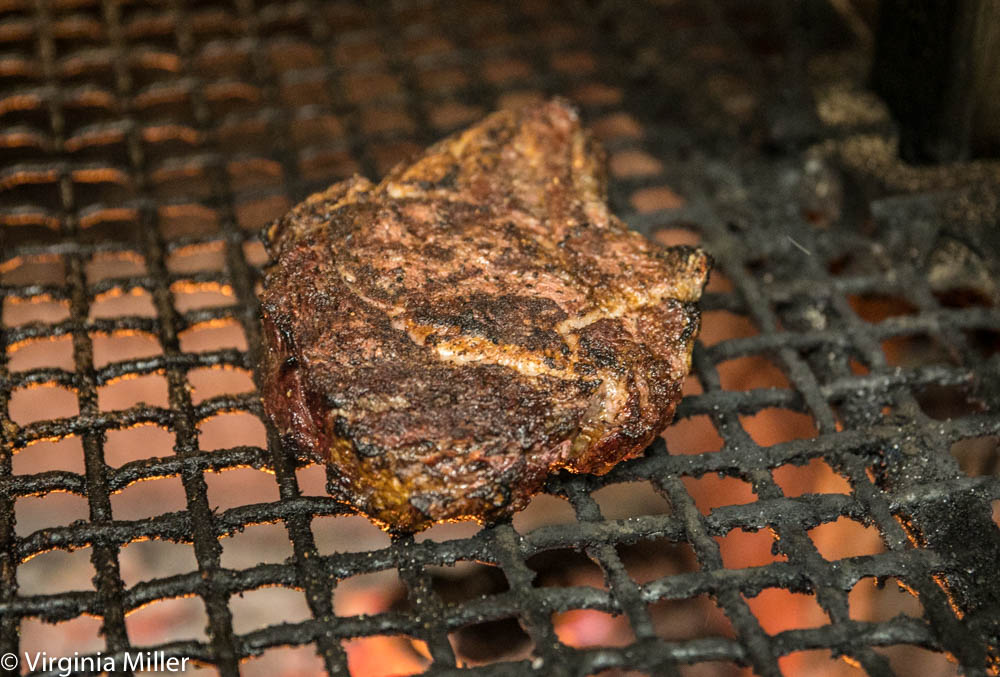
Hitching Post’s Santa Maria-style barbecue steaks
The Deep South is not a region I’ve lived but have traveled it extensively, studying its food and music the past 15 years. My fervor for Southern cuisine had me exploring Florida conch and stone crab, Tex Mex and Texas brisket, Low Country and Gullah cuisine and my most beloved: Louisiana’s Cajun and Creole.
Then there was barbecue. Multiple road trips later, I’ve dug deep from Texas to the Carolinas, examining ‘que and music all along the way. My first and true love was always pulled pork, which is synonymous with BBQ in the Deep South. I adore Memphis ribs and Kansas City-style sauce, yet when it came to brisket, my first love was Jewish delis, which I got schooled on in NYC when moving to New Jersey over high school years. Sure, I loved Texas brisket but that was not my BBQ go-to. Give me hog all the way.
Let’s be honest: many non-Southerners’ (and some Southerners) fear of fat and obsessive dieting keep them from real barbecue. Pitmasters have complained to me that some customers ask for leaner cuts or question thick char. Sorry: that’s not ‘que.
After 10 years of barbecue road trips through the Carolinas, Tennessee, Arkansas and Georgia, I finally returned to Texas with ‘que at the forefront of my agenda. For two-weeks, I trekked through Dallas/Ft. Worth, Austin, Houston and barbecue’s famed Hill Country. I find some of what gets the most raves in Texas (which shall remained unnamed) good but overrated — and NOTHING is worth 4-5 hour lines.
But despite my strong feeling that some Texas barbecue is grossly overhyped — and my draw towards the Deep South well; over Texas — my number one BBQ experience of all time occurred in Pearland, about 30 minutes southeast of Houston. At Killen’s Texas Barbecue, even the turkey made me want to shout. Brisket, pulled pork, links, all was glorious. As true barbecue fans know, it’s rare for a place to nail all meats or sauces… or sides, for that matter. The best are lucky to master one or two elements. Pitmaster/chef Ronnie Killen nailed them all. By 10am, there was a line down the block, though Pearland isn’t a sparse town (don’t worry: these aren’t Franklin Barbecue lines). On the drive out, I’d pass trucks with a smoker attached to the back. This was serious barbecue country.
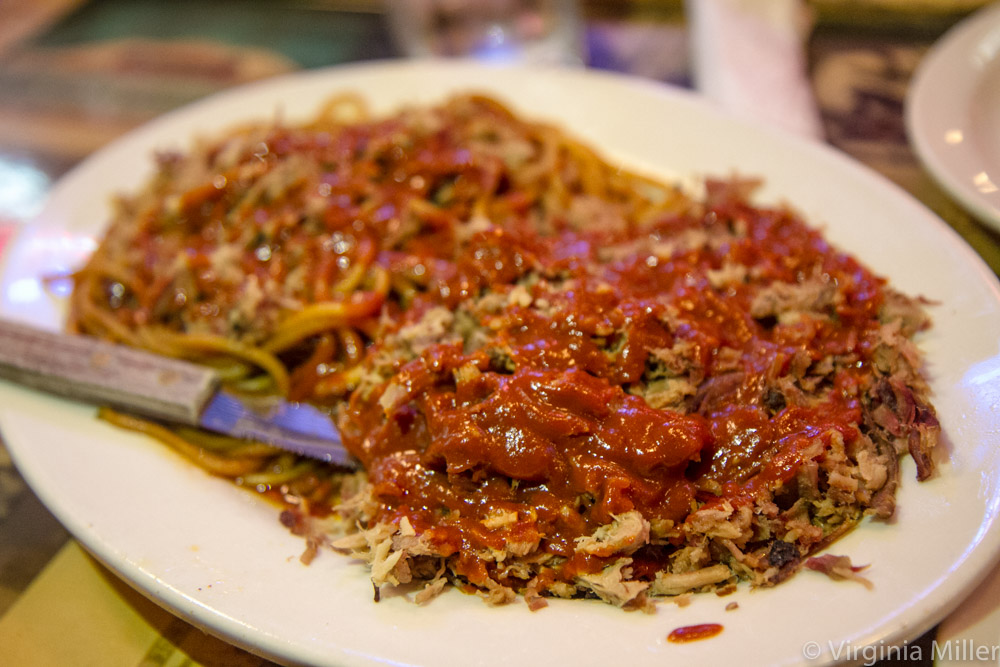
Still dreaming about The Bar-B-Q Shop’s barbecued spaghetti in Memphis
One of my “complaints” with Texas ‘que has long been the lack of iconic sauces. They are proud as hell about their rubs and brag about not needing sauce. While it’s true that the best meat shouldn’t need it, sauce is an art in and of itself, only adding layers to perfect meat, not replacing a top-notch rub. Whether South Carolina mustard, North Carolina vinegar, Kansas City-style, Piedmont (aka “Lexington Dip”) or creamy Alabama white sauce, I’m enamored of all sauces when done right.
So let’s talk California, or anywhere outside the South, Missouri and Texas, really. Authentic barbecue is hard, nay, almost impossible to find, no matter how many hipster Brooklyn spots claim “real” barbecue. Even when the meat is good, such places often lack the soul — or fattiness — required to push into the heavenly realms (one of my first Nashville favorites, aptly dubbed their BBQ shack “Hog Heaven,“ RIP).
Let’s be honest: many non-Southerners’ (and some Southerners) fear of fat and obsessive dieting keep them from real barbecue. Pitmasters have complained to me that some customers ask for leaner cuts or question thick char. Sorry: that’s not ‘que.
Crusty char, complex rubs and flavor-packed sauces —don’t even get me started on burnt ends— require not just hard-won technique and skill to achieve, but soul and even a touch of fearlessness. A whole other issue is the struggle of black-owned barbecue joints, despite the fact that African Americans have perfected and honed barbecue for generations (dig deeper in stories like Howard J. Conyers, PhD’s What We Lost When We Lost David McAtee, or about chefs like Bryan Furman reclaiming barbecue heritage among BIPOC). Just a couple standout black-owned barbecue shops in my BBQ road trips include media darling Rodney Scott’s in Charleston, or my beloved, OG Bar-B-Q Shop in Memphis where I first discovered (and lost my mind for) pulled pork spaghetti.
Suffice it to say, California isn’t exactly barbecue territory, nor is anywhere in the West. However, California’s deep cowboy roots alongside vast ranchland and farms that feed the nation gave birth to the West’s one true barbecue style. Dating back to the 1800s, Santa Maria-style BBQ is best exemplified at the original Hitching Post in Casmalia since 1952. Former Sunset food editor, Margo True, best catalogued this barbecue style and history back in 2013, as I’ve also done my own digging, research and writing on the Santa Maria region.
… my beloved, OG Bar-B-Q Shop in Memphis [is] where I first discovered (and lost my mind for) pulled pork spaghetti.
What of “real deal” barbecue in the Bay Area? Our best is black-owned and Texas-influenced (just you wait until I get into Horn Barbecue), while other regional styles show up in unexpected places. But you need to order right and know where to dig. A couple of the best BBQ joints have left us in the past decade, namely SF’s fabulously dingy Brother-In-Laws Bar-B-Que (where 4505 Burgers & BBQ now resides) and Uncle Frank’s in Mountain View, which served ‘que in the back of a dodgy dive bar, frequented by clientele wearing gold chains and fur coats. Uncle Frank’s felt straight out of a Tarantino film, not Silicon Valley.
Lower Haight’s Memphis Minnie’s has been respectably going strong since 2000, and despite the name, is more Hill Country/Central Texas in style. But honestly, I’ve struggled appreciating their lackluster sauces and meats. Though a SoMa staple since 2008, CatHead’s BBQ just closed August 2nd as a COVID-19 casualty (here’s hoping Tennessee native Richard Park and Pamela Schafer can bring back that Coca Cola-smoked brisket elsewhere). The East Bay has a number of ‘que joints, from longtime local chain, the uneven Everett & Jones, to 2017 newcomer Smokin Woods BBQ or decade-old Champion Smokehouse.
But I have two words for you when it comes to Bay Area ‘que (and only two spots really match the best in the South — but we have two, which is more than most regions outside the South): read on in my Bold Italic article about my top two and other solid spots that have some items worth ordering.

Choosing meats out of hte pit at Coopers BBQ in Llano, TX (Hill Country legend)
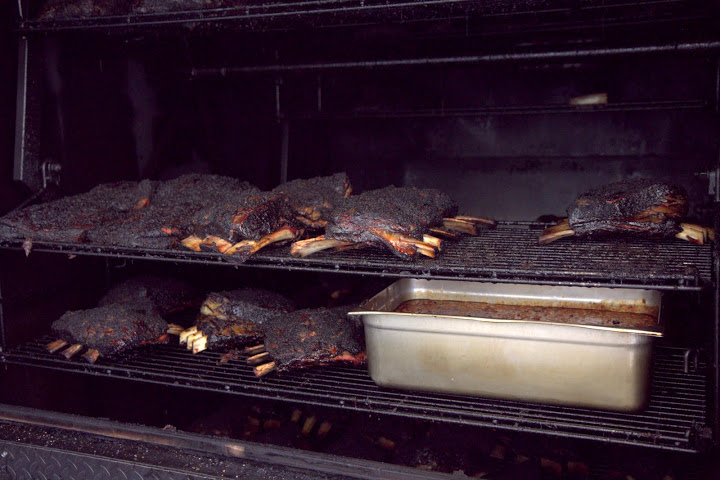
Inside the pit at Killens in Pearland, TX
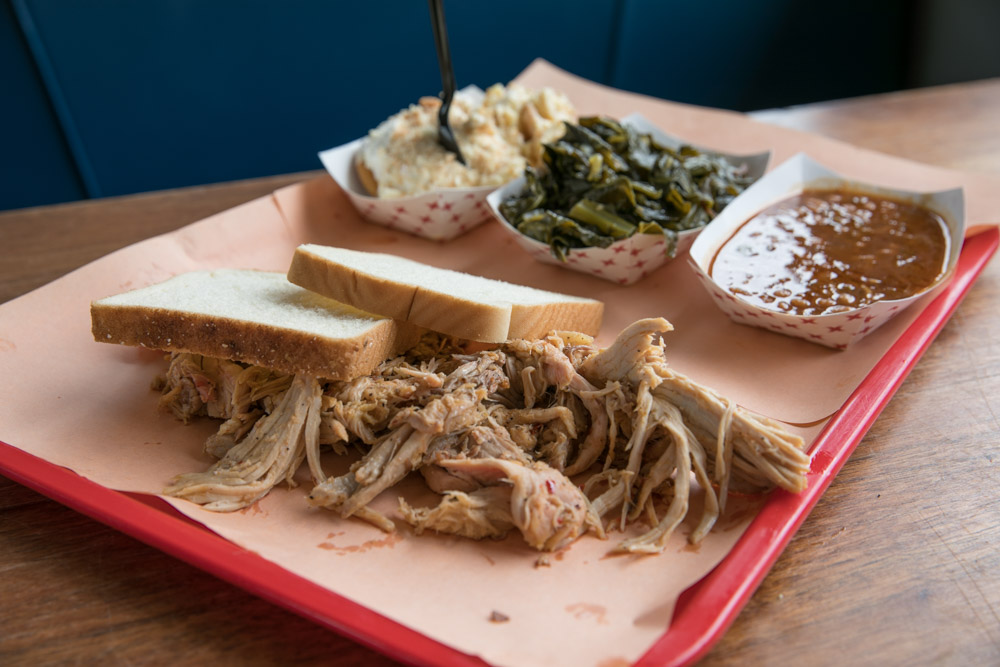
Rodney Scott BBQ Charleston
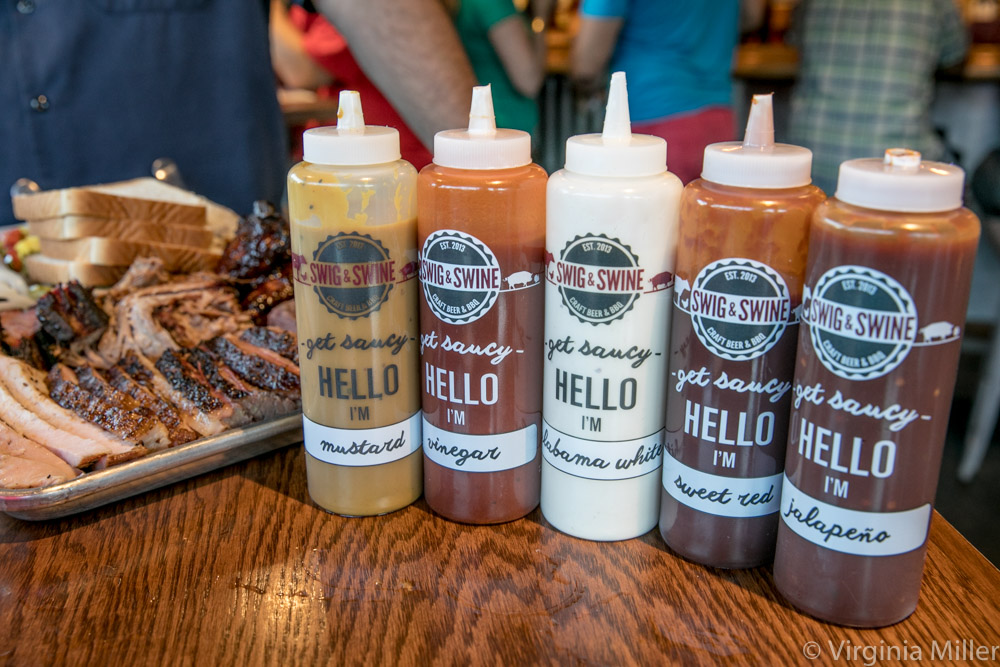
Swig & Swine sauces, one of my TOP BBQ joints in the Carolinas, located in Charleston
